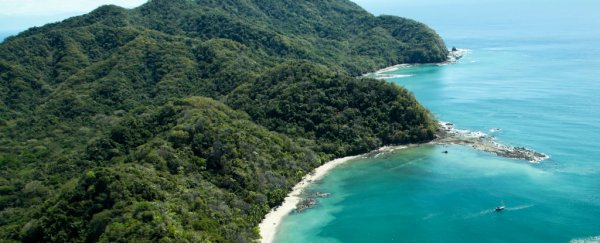Costa Rica ran on 100 percent renewable energy for 76 straight days between June and August this year, according to a new report, demonstrating that life without fossil fuels is possible - for small countries, at least.
This is the second time in two years that the Central American country has run for more than two months straight on renewables alone, and it brings the 2016 total to 150 days and counting.
According to Costa Rica's National Centre for Energy Control (CENCE), 16 June 2016 was the last day this year that fossil fuels-based energy was used by the national grid. (Data for September is still forthcoming.)
Since then, the country has been powered on a mix of hydro, geothermal, wind, and solar energy, with hydro power providing about 80.27 percent of the total electricity in the month of August.
Geothermal plants contributed roughly 12.62 percent of electricity generation in August, while wind turbines provided 7.1 percent, and solar 0.01 percent.
Just like last year, when Costa Rica managed to power itself for a total of 299 days without burning oil, coal, or natural gas, 2016's milestone was helped along by heavy rainfalls at the country's four hydroelectric power facilities.
While the achievement is undoubtedly impressive, and something that should definitely be celebrated as proof that a range of renewable energy sources can lessen a country's reliance on fossil fuels, it's important to note that Costa Rica's success is largely due to its size.
It has a total area of about 51,000 square kilometres - about half the size of the US state of Kentucky - and it has a population of just 4.9 million people.
That relatively small population means a whole lot less energy is needed in Costa Rica than, say, the US, as Maria Gallucci reports for Mashable:
"This nation of 4.9 million people generated about 10,713 gigawatt-hours of electricity in 2015, according to a July report from the Economic Commission for Latin America and the Caribbean.
The United States, by contrast, generated about 373 times more electricity, with roughly 4 million gigawatt-hours of total generation in 2015, according to data from the US Energy Information Administration."
Plus Costa Rica's primary industries are tourism and agriculture, rather than more energy-intensive industries such as mining or manufacturing.
But just because the country is small and is doing better at ditching fossil fuels than most, that doesn't mean it's going to rest on its laurels.
As Gallucci reports, a massive hydroelectric project called Reventazón, run by the Costa Rica Electricity Institute (ICE), will come online later this month, after six years of construction, which means even more hydro power is in store.
"Revantazón is the largest public infrastructure project in Central America, after the Panama Canal," says Gallucci. "The dam's five turbines will have a generating capacity of 305.5 megawatts - enough to power around 525,000 homes."
We can't wait to see how far Costa Rica can go with their extensive renewable energy sources. Let's hope 365 days of zero fossil fuels is on the horizon.
